Strong latissimus dorsi muscles can transform any figure. 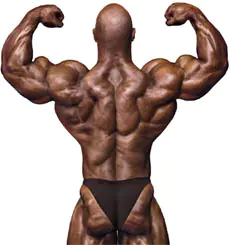
Fat people become massive, thin people become athletic. It is the lats that are responsible for the “span” of the back, giving it good posture and the coveted muscle pattern called “wings”. These are some of the largest muscles in humans, and exercises that target them are massive. Which one should you prefer?
The basic exercise for training the lats is, of course, pull-ups. When performed with a wide grip behind the head, they load the latissimus muscles the most. But the wide position of the arms also has a serious drawback: a shortening of the amplitude of movement, and therefore a reduction in work.
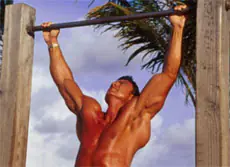
Alternatively, you can try doing pull-ups with a medium grip. In this case, the angle of the torso will play a significant role. The closer you are to the vertical, the less load there is on the wings, so you should try to arch your back at the top point and move your legs slightly forward. Something similar also happens when doing pull-ups with a narrow parallel grip, when you have to bend over to avoid hitting your head.
If the technique is followed, the main load during pull-ups falls on the top of the latissimus and the bottom of the trapezius muscle. And if you pull yourself up to your chest, then the middle and top of the lats work more.
In terms of biomechanics, rows are identical to pull-ups. But there are some nuances here too. The most common exercise is the barbell row. In this case (as in the case of pull-ups), the biceps are indirectly activated, the trapezius and deltoids work, and in addition, the long back muscles. In order to pump up the lats, both grip options are practiced, but the reverse is still preferable. When the elbows are pressed to the body, the wings contract more strongly.
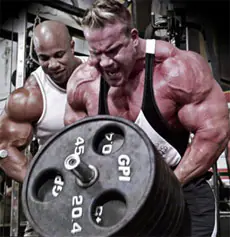
The T-row is similar in effect to the barbell row, but places more isolated load on the lats. During all repetitions, the back should not lose its arch. For a complete isolating effect, you can build approaches according to the pyramid principle: with less weight, focus on technique and carry out the projectile with maximum amplitude, and then “finish off” the muscle with heavy weights. T-pull is the best answer to those who ask how to pump up their wings if they have lower back problems. The exercise completely eliminates axial load on the spine.
An alternative option, the dumbbell row, bent over or on an incline bench, is generally similar in principle to the incline barbell row and T-bar row. But, among other things, the exercise can be used to correct lat asymmetry, and, with the knowledge of a doctor, also to treat scoliosis. After all, it becomes possible to work on each side in turn and with different weights. It is better to choose a bench angle of 25°-30°. The end point for the weights should not be under the chest, but on the sides of the waist.
If you don’t know which equipment ㅡ barbell or dumbbells to give preference to, then keep in mind: with a barbell you will progress faster in working weights. But this question can also be looked at from different angles.
So far we have not said a word about the disadvantages of the listed exercises. Is it possible to pump up your wings with absolutely no “side effects”? If so, then definitely not with the help of an inclined row: in it, the extensors work no less than the lats. Pull-ups are also not a panacea, because to build good volume, your own body weight alone is not enough. This disadvantage is absent when pulling on a block machine, but along with the weight, the likelihood of injuries to the shoulder joint and the lower biceps ligament increases.
All other bent-over rows without chest support are no less dangerous. In such cases, not only the ligaments and joints are at risk, but also the lumbar spine. Half of the hernias and protrusions of bodybuilders were earned thanks to these exercises.
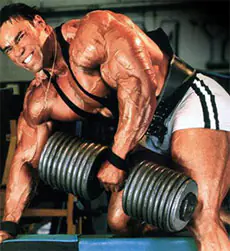
All variations of one-handed rows remain. Due to the fact that we lean on a bench or other support with our free hand, the spine is practically not loaded.
It’s just that the latissimus muscles adapt to the load with lightning speed. And pulling a dumbbell becomes more and more inconvenient as the volume of the weights increases. You have to sacrifice the range of motion, and it turns out that the lats are “under-worked” even with significant progress in the weights. This problem can be partially solved by abandoning the emphasis and training in a half-lunge. But in general, this option does not add convenience.
Some athletes choose a weight such as a small barbell to perform one-arm deadlifts. It's true that a barbell is more difficult to stabilize than a dumbbell, but the ability to increase weight while maintaining range is probably worth it. When performing a deadlift of this type, it is better to stand on two legs, without resting your knee on the bench. The free arm should be extended and resting on the edge of the backrest. The position of the barbell is not perpendicular to the body, but diagonally. This method is clearly not suitable for everyone, but it is worth at least trying.
Pulling a horizontal block to a belt with various handles has many options. As a safer exercise, it can partially replace the bent-over barbell row. For beginners, it is better to perform the exercise smoothly and focused, with a body angle of 90° to the floor. With experience, when working on a mass, a lot of weight will be required, and the back tilt can be increased by adding small oscillatory movements of the body.
The lat pulldown is one of those exercises that can produce greater returns in the partial amplitude (closer to the end point). But you can understand which method is best for your lats only after working for a long time with light weight and without jerking. Keep your elbows close to your torso so that the triceps and rear deltoids are used to a minimum and most of the load falls on the target.
An important point is the positioning of the brushes; When performing deadlifts on a pulley machine, it is possible to hold on with a more relaxed grip, “hooked fingers.” This way the biceps will have even less unnecessary work to do.
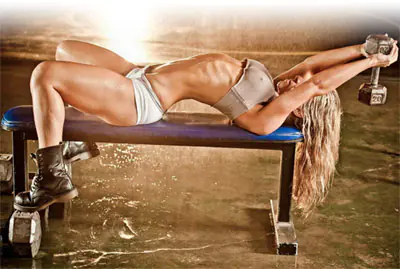
If pull-ups, barbell rows and even horizontal rows can be safely put at the beginning of the workout, then... a pullover with dumbbells is ideal for finishing. The literature believes that this exercise pumps the chest. It’s also hard to argue with the fact that the exercise also involves the shoulders and triceps. But we’ll tell you a secret: it’s impossible to pump up not only your breasts with a pullover, but nothing in particular at all. The exercise is not needed to “clog”, but to stretch the lats and speed up their recovery. In addition, a lying pullover is mandatory when training in adolescence, as it has a positive effect on the shape and size of the chest itself during this period.
As you have already seen, there is no shortage of exercises for the latissimus muscle. What other criteria can be used to guide their selection and combination?
To fully develop the lats, your training plan must include both vertical rows (pull-ups) and horizontal ones. For example: Monday - pull-ups to the chest, rows from a vertical block behind the head and a pullover while lying down with a dumbbell. Friday – bent over barbell row and lower block row. That is, the task is not so much to weed out unnecessary exercises, but rather to select the option of each that is optimal for the given case.
In conclusion, a few more comments about how to pump up your wings.
- The indicator of correct technique at first should be pain. The pain is specifically in the lats, not the biceps or lower back.
- Warm up your joints well before training. Don't ignore shoulder straps and safety belts. Train your own natural weightlifting belt - lumbar extensors, abs and obliques.
- All of the exercises listed are difficult and require more time to recover. A week off is normal. Hence the last tip.
- Find a good massage therapist.



